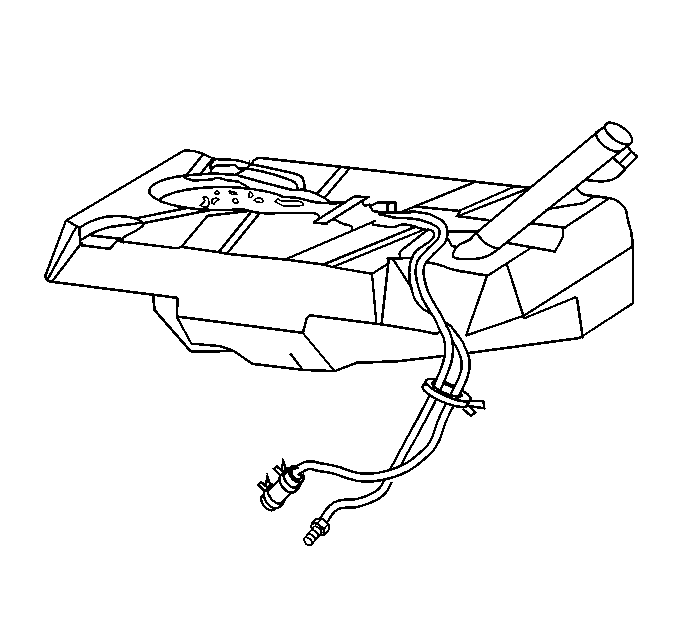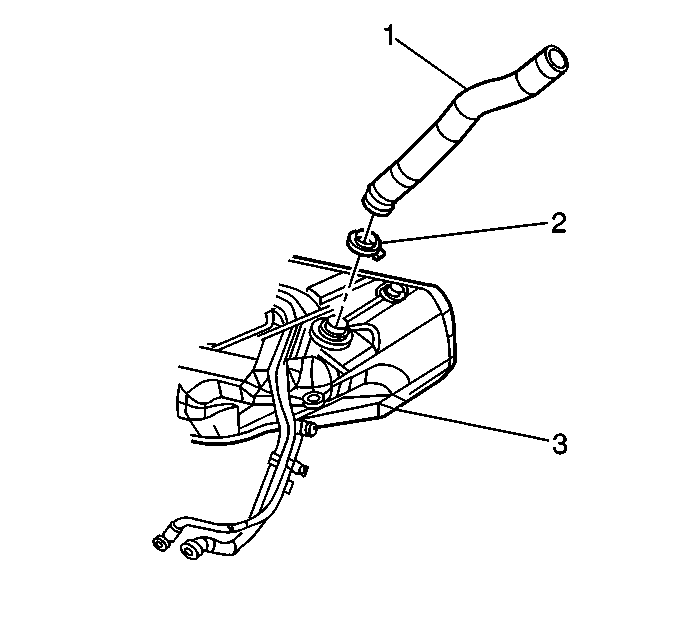Caution: This vehicle is equipped with Supplemental Inflatable Restraint (SIR). Refer to the Cautions in the On-Vehicle Service and the SIR Component and Wiring Location view in the Supplemental Inflatable (SIR) System before any performing service on or around SIR components or wiring. Failure to follow the Cautions could result in possible air bag deployment, personal injury, or otherwise unneeded SIR system repairs.
Notice: Use the correct fastener in the correct location. Replacement fasteners must be the correct part number for that application. Fasteners requiring replacement or fasteners requiring the use of thread locking compound or sealant are identified in the service procedure. Do not use paints, lubricants, or corrosion inhibitors on fasteners or fastener joint surfaces unless specified. These coatings affect fastener torque and joint clamping force and may damage the fastener. Use the correct tightening sequence and specifications when installing fasteners in order to avoid damage to parts and systems.
General Description
The fuel supply is stored in the fuel tank. An electric fuel pump, attached to the fuel sender (inside the fuel tank) pumps fuel through an in-line filter to the fuel injection system. The fuel pump is designed to provide fuel at a pressure above the regulated pressure needed by the fuel injectors. A fuel pressure regulator keeps fuel available to the fuel injectors at a regulated pressure. Unused fuel is returned to the fuel tank by a separate pipe. For further information on the fuel injection system, refer to Fuel Metering System Component Description .
Unleaded fuel must be used with all gasoline engines for proper emission control system operation. Using unleaded fuel will also decrease spark plug fouling and extend engine oil life. Leaded fuel can damage the emission control system, and its use can result in loss of emission warranty coverage.
All vehicles with gasoline engines are equipped with an evaporative emission system that minimizes the escape of fuel vapors to the atmosphere. For information regarding this system, refer to Evaporative Emission Control System Operation Description
On-Board Refueling Vapor Recovery System (ORVR)
The On-board Refueling Vapor Recovery System (ORVR) is an on-board vehicle system designed to recover fuel vapors during the vehicle refueling operation. The flow of liquid fuel down the filler neck provides a liquid seal which prevents vapor from leaving the fuel system by transporting vapor to the EVAP canister for use by the engine. Listed below are the ORVR system components with a brief description of their operation:
- The fuel tank - contains the modular fuel sender, the fuel limiter vent valve, and 3 rollover valves.
- The fuel filler pipe - the pipe which carries fuel from the fuel nozzle to the fuel tank.
- The EVAP canister - the EVAP canister receives refueling vapor from the fuel system, stores the vapor and releases the vapor to the engine upon demand.
- The vapor lines - transport fuel vapor from the tank assembly to the EVAP canister.
- The check valve - the check valve limits fuel "spit-back" from the fuel tank during the refueling operation by allowing fuel flow only into the fuel tank. This check valve is located at the bottom of the fuel filler pipe.
- The modular fuel sender assembly - this assembly pumps fuel to the engine from the fuel tank.
- The fill limiter vent valve (FLVV) - this valve acts as a shut-off valve located in the fuel tank and has the following functions:
- The pressure/vacuum relief valve - the pressure/vacuum relief valve provides venting of excessive fuel tank pressure and vacuum. The valve is located in the fuel filler neck on a plastic fuel tank.
- The vapor recirculation line - the vapor recirculation line is used to transport vapor from the fuel tank to the top of the fill pipe during the refueling to reduce vapor loading to the enhanced EVAP canister.
- The variable orifice valve - the variable orifice valve regulates the amount of vapor allowed to enter the vapor recirculation line.
| • | Controls the fuel tank fill level by closing the primary vent from the fuel tank. |
| • | Prevents fuel from exiting the fuel tank via the vapor line to the canister. |
| • | Provides fuel-spillage protection in the event of a vehicle rollover by closing the vapor path from the tank to the EVAP canister. |
Fuel Tank

The fuel tank is used to store fuel for the vehicle. The tank is located in the rear of the vehicle and is held in place by 2 straps that are attached to the underbody. The fuel tank is made of plastic and is coated internally with a special corrosion inhibitor. Due to the internal coating of the fuel tank, the fuel tank is not repairable. The fuel tank shape includes a reservoir in order to maintain a constant supply of fuel around the fuel pump strainer during low fuel conditions and aggressive vehicle maneuvers.
The tank also contains a fuel vapor vent valve with roll-over protection. The vent valve also features a two phase vent calibration which increases fuel vapor flow to the canister when operating temperatures increase the tank pressure beyond an established threshold.
The fuel tank contains 3 rollover valves that prevents fuel from entering the fuel pipes in the event of a vehicle rollover. The rollover valves are not repairable.
Fuel Tank Filler Pipe

